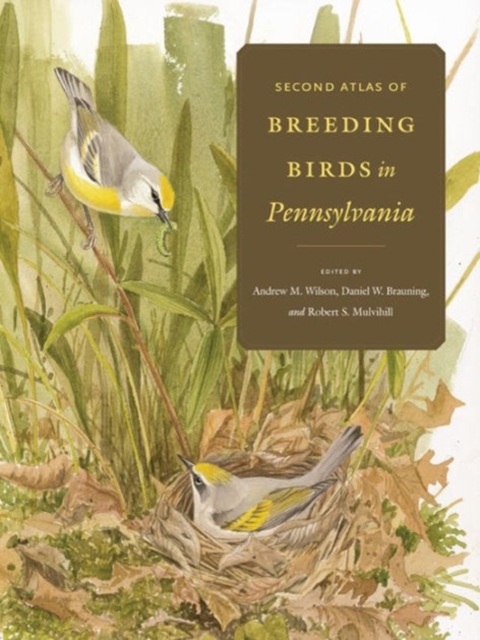
Second Atlas of Breeding Birds in Pennsylvania Hardback
Edited by Andrew M. Wilson, Daniel W. (Pennsylvania Game Commission) Brauning, Robert S. (Conservation Outreach Manager) Mulvihill
Hardback
Description
Twenty years after the first Atlas of Breeding Birds in Pennsylvania was published, the Second Atlas of Breeding Birds in Pennsylvania brings our knowledge of the state's bird populations up to date, documenting current distribution and changes in status for nearly two hundred bird species.
More than two thousand dedicated birdwatchers completed surveys of birds across the state from 2004 to 2009.
The data amassed reveal the distribution of each species and show changes in distribution since the publication of the first Atlas.
Additionally, a highly trained survey crew carried out bird counts at more than 34,000 locations statewide.
These counts tabulated not just species but individual birds as well, in a manner that-for the very first time-enabled precise estimates of the actual statewide populations for more than half of the 190 breeding species detected.
In all, more than 1.5 million sightings were compiled for the second Atlas, providing an unprecedented snapshot of the bird life of Pennsylvania-and perhaps of any comparably sized region in the world. The introductory chapters to the second Atlas describe and discuss recent changes in climate and bird habitats within Pennsylvania.
The data gathered and summarized for this volume were used by the more than forty contributing authors to write comprehensive and authoritative accounts of each species.
These accounts are illustrated by stunning photographs, usually taken somewhere within the state.
Up to three maps per species show in fine detail their current distribution based on the second Atlas, changes in distribution since the first Atlas, and, for more than one hundred species, their abundance in Pennsylvania.
Information
-
Available to Order - This title is available to order, with delivery expected within 2 weeks
- Format:Hardback
- Pages:612 pages, 308 Charts; 484 Maps; 202 Halftones, color
- Publisher:Pennsylvania State University Press
- Publication Date:09/11/2012
- Category:
- ISBN:9780271056302
Information
-
Available to Order - This title is available to order, with delivery expected within 2 weeks
- Format:Hardback
- Pages:612 pages, 308 Charts; 484 Maps; 202 Halftones, color
- Publisher:Pennsylvania State University Press
- Publication Date:09/11/2012
- Category:
- ISBN:9780271056302






